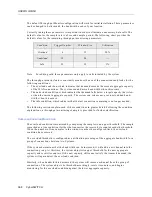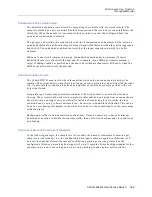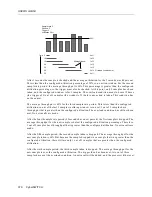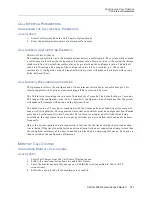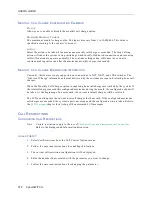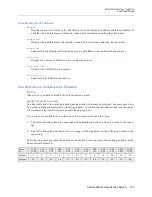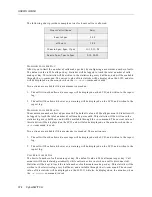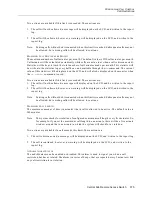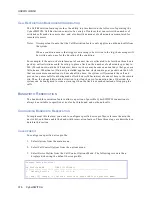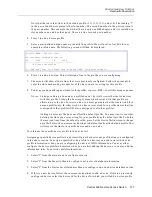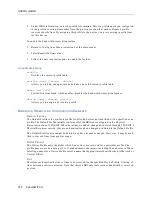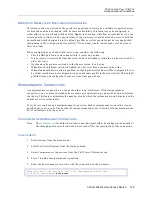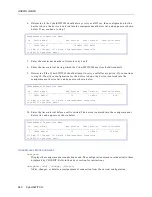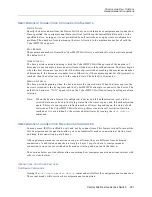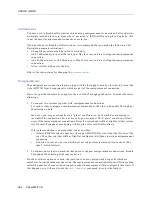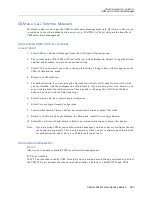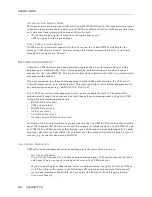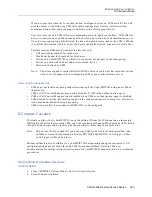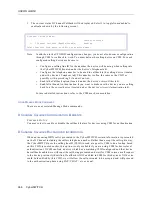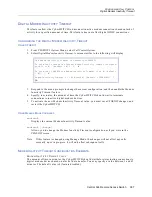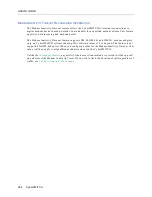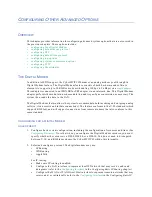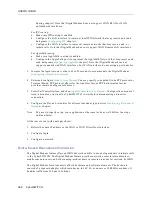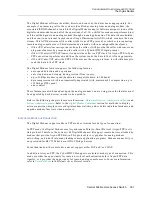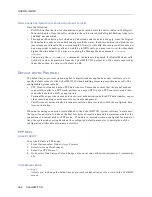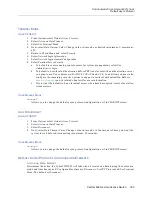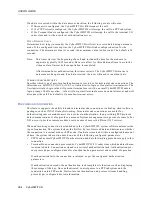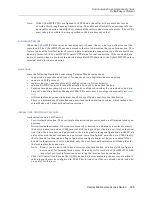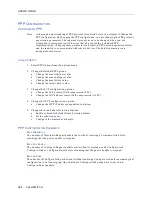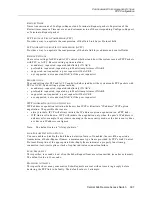
USER’S GUIDE
382 CyberSWITCH
Call Restrictions
You may wish to disable call restrictions when using semipermanent connections. Call restrictions
are mainly intended for use in areas where “per minute” ISDN tariffs are in place. Typically, this
in not the case if semipermanent connections are in use.
If you decide not to disable Call Restrictions, we recommend that you make the following Call
Restriction parameter alterations:
•
Change the maximum call duration to warn only.
•
Add 1,440 minutes to the Call Minutes per Day for every call in a configured semipermanent
connection.
•
Add 43,200 minutes to Call Minutes per Month for every call in a configured semipermanent
connection.
•
Allow calls for all hours in the day.
Refer to the instructions for changing the
parameter values
.
Throughput Monitor
The semipermanent connection feature, along with the throughput monitor, interact to prevent the
CyberSWITCH from dropping calls which are part of the semipermanent connection.
However, specific considerations apply to the use of the Throughput Monitor. Consider these two
situations:
1.
To connect two systems together with semipermanent connections:
For each system, configure a semipermanent connection to the other, and enable Throughput
Monitoring on both.
However, you may occasionally see a “glare” condition (i.e., both machines attempting to
reestablish the connection after a network or power outage). This “glare” condition will not
occur if the semipermanent connection utilizes the entire bandwidth available at either system
site. Normal throughput monitoring will drop the extra call if traffic allows.
If this glare condition is unacceptable, you may either:
•
Delete all Dial-Out phone numbers (through CFGEDIT, Device List entries) for one of the
sites. The other site (that still has Dial-Out configured) will then create the semipermanent
connection.
•
Treat one system as a device which does not support semipermanent connections. (See
item 2, which follows).
2.
To connect an system to a machine that does not support semipermanent connections, disable
Throughput Monitoring at the remote device.
If neither of these options are used, the remote device may periodically drop calls which are
members of a semipermanent connection. The semipermanent connection feature will stop making
calls if the number of connections dropped reaches the maximum within configured time limit. If
this happens, you will need to use the
call device
command to restart the feature.

